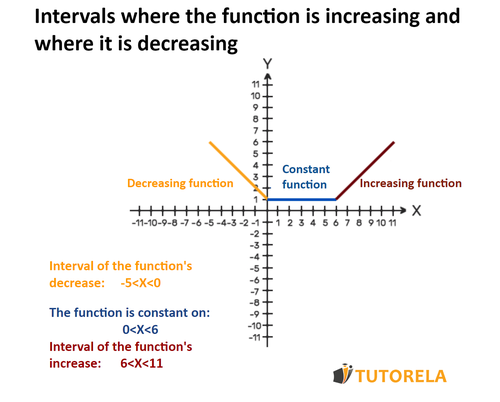The intervals where the function is increasing show a certain situation in which the values of and increase together.
The intervals where the function is decreasing expose a certain situation in which the value of in a function increases while that of decreases.
